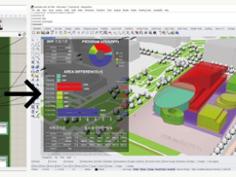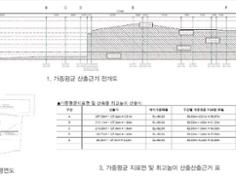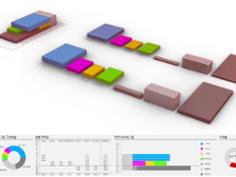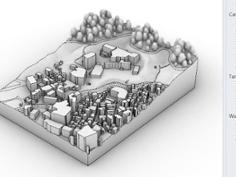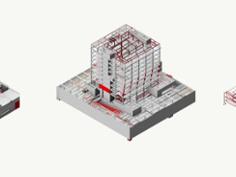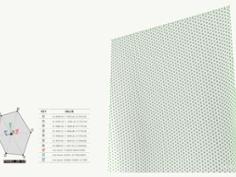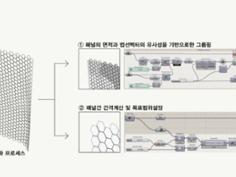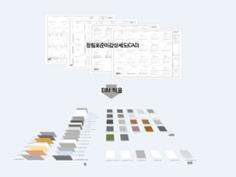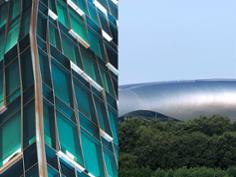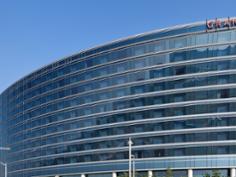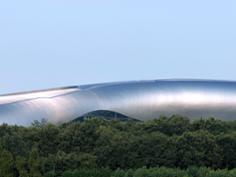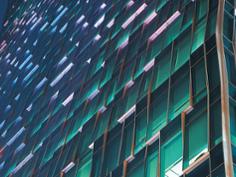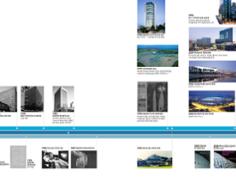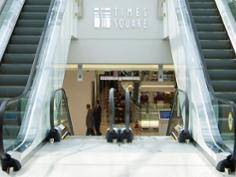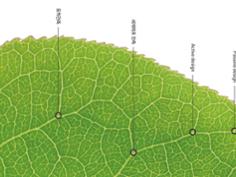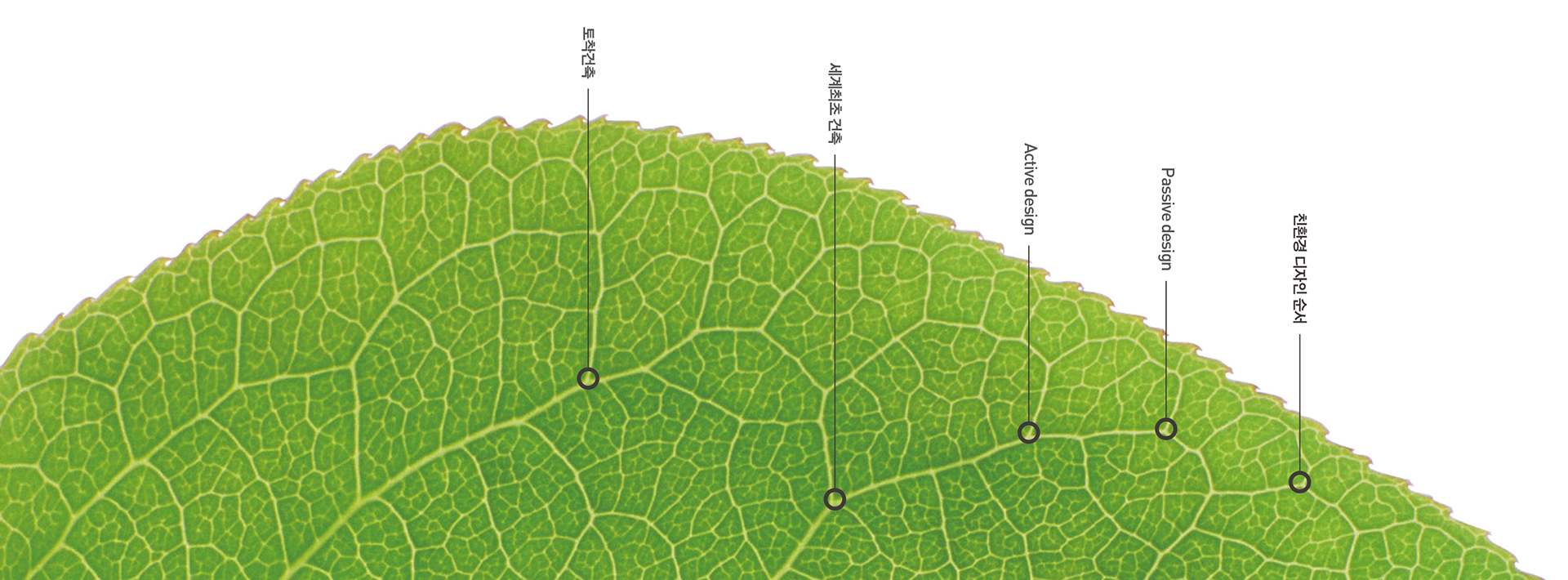
The Basic Principle to Design the Environmentally Friendly Building
Environmentally Friendly Architecture in Future Prefigured by Conan

Think about the animation Future Boy Conan which was produced in the 1970s and won people's heart in many countries. Its lifting theme song which starts with "On the blue sea far away, a new hope is waving" indeed makes us feel a new hopeful future will be likely to be unfolded. This animation film against the backdrop of the planet in future indeed includes an important clue to prefigure the future society, "Industria," representative of a scientific civilization. This megalopolis has an appearance of a nature-friendly city powered by solar energy. Dr. Lao who knows the secret of solar energy conveys the message that we should regenerate the future community by maintaining this natural energy source. When this animation was broadcast then, the scene of a future city operated by solar energy was nothing but a picture imagined fictionally. However, we are now facing a reality in which we should apply the natural energy source to the development of new cities and the design of modern buildings.
The Future Has Become the Present
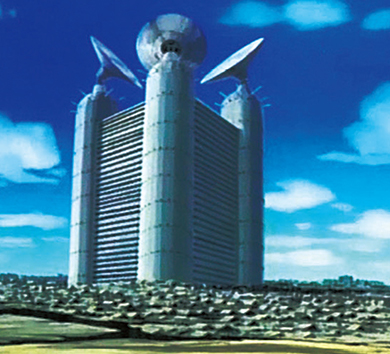
The term "environmentally friendly (or environment-friendly) architecture" emerged not so long ago. In 1999, the governmental report Design Guidelines for Environmentally Friendly Architecture defined the purpose of environmentally friendly design as the "pursuit of architecture that saves environmental loads and satisfies the necessary quality of life by reducing building energies and resources, forming amenity architectural environment, and conserving the neighboring ecology," beginning to impart the needs of environmentally friendly architecture in earnest. Although vernacular architecture has existed since long ago and come down by custom under the influence of local natural environment, the recent emergence of interest in environmentally friendly architecture is due to the world scientists' warning against the climate change by global warming and the participation of countries in the climate change convention which sees environmentally friendly buildings as one of the solutions to cope with this critical situation. As the aforementioned animation prefigured earlier, this is the time to ponder on what preparat
ion is needed to faithfully carry out the embodiment of environment-friendly buildings
that can fulfill the energy demands only with the natural energy.
Returning to the Basics...
When designing a building in the present-day society, it is almost impossible to design without consideration of energy use.
It basically needs a heating system to prevent frost in the winter, a lighting system that enables indoor activities in the dark, and more desirably, an electric energy that can operate air-conditioners and electric devices. Like this, it is impossible to eradicate energy necessary for occupants' activities. Be that as it may, it is possible to reduce the amount of energy consumption, and the emergence of buildings that save energy gradually can be referred to as an evolution of environmentally friendly buildings.
For how to save the energy consumption of buildings and use the future energy sources, the application procedure is so important and the most basic of environmentally friendly design. Also, environment-friendly design should refrain from such paper designs as only to draw attention, and as the traditional architecture has done, should be based upon the architectural design equipped with technology and in-depth understanding about natural environment as well as upon the outcomes of analyzing and understanding the given environment.
However, some professionals of architectural design lack the understanding of how to utilize the natural energy and the analytic process of environment-friendly design, and others do not differentiate passive and active, or photovoltaic and solar thermal methods. Therefore, a consistent attitude to learn new technologies and environment-friendly design methods is also the basics of an architect who designs environmentally friendly buildings.
In this chapter, we will explain the basic sequence of approach and techniques for the design of environment-friendly buildings, and introduce Junglim's sustainable design process as a means of completing environment-friendly buildings.
The Basics to Approach Environmentally Friendly Architectural Design
First of all, it is necessary to approach in terms of architectural design by minimizing building loads and applying high-efficiency equipment components, and finally to review new renewable energy sources. That is to say, it is the basic principle for environmentally friendly architecture that applies design elements sequentially.
The Principles of Approaching Environmentally Friendly Architecture
Even if someone finds it environmentally friendly just to put a photovoltaic system on the rooftop at the end of architectural design, it is only that the designer made a building for display without understanding the true sense of environment-friendly architecture. To create a building that can effectively perform its true environment-friendly function instead of only superficially displaying environment-friendliness, it is necessary to observe the basic design process.
To form amenity interior space, the basic approach is as follows: firstly, to apply such architectural techniques as microclimate adjustment through climate design, energy-saving, and passive control, and only for what those techniques do not solve, to apply active mechanical control. More specifically put by phases, first, climate design is to control architectural environment by utilizing passive techniques rather than dealing with natural conditions like sunlight, wind, and vegetation as obstacles, so that it can save much energy only by designing in accord with local natural conditions. Second, energy-saving is to adjust forms, beef up the insulation, and properly adjust openings so as to reduce the outer surface area of a building. Third, passive control is to adjust indoor amenity environment through natural systems, applying solar heating, natural cooling, daylighting, and the like. Fourth, active control is a mechanical technique that consumes energy for the environmental control of heat, light, and sound in a building that were not solved by passive control, so that it needs application of high-efficiency devices. Finally, a back-up system is to apply new renewable equipments like photovoltaic and solar thermal devices that can produce energy autonomously in the building, making it possible to economically introduce the system by maximizing energy-saving and installing only a necessary capacity in the final phase. Arguably, working out the process in order of environment-friendly design approach, one can save plenty of efforts and costs to make amenity environment of a building and contribute to saving the earth ecology, which must be the duty of an architect in this time.
Excerpts from "The basic principle to design the environmentally friendly building" (2013)

